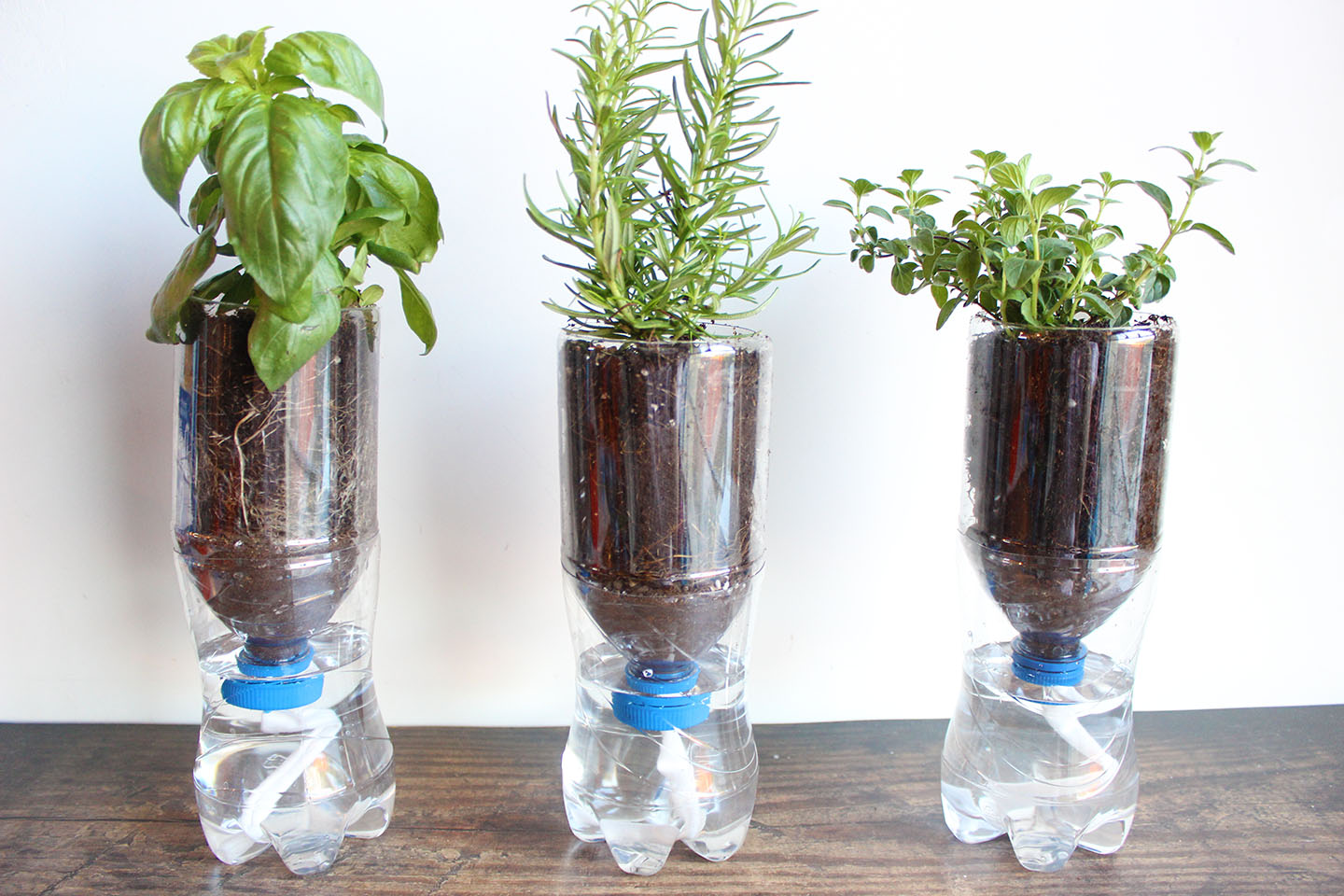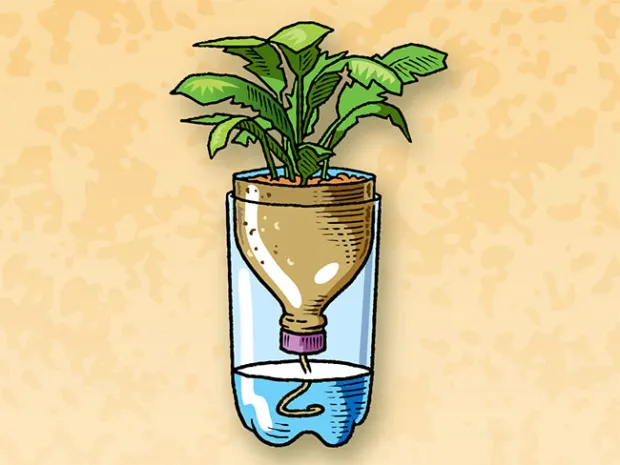Inspiration
My wife is a plant enthusiast with plants galore across out entire house. I am wanting to combine her love for plants with my passion for DIY projects for this upcycling project. We are also a couple that loves efficiency and automation.
 Figure 1: Examples of self watering planters
Figure 1: Examples of self watering planters
One of my wife’s other plants is a rubber tree that we got from easyplant. Their technology works by filling up a pot of water that gravity feeds to the bottom of the plant as the plant needs water. The water storage in the easyplant pots will last for about a month before you need to refill them.
 Figure 2: Self watering technology by easyplant
Figure 2: Self watering technology by easyplant
Aesthetic and Materials
This project will fall under the biophilic design aesthetic which focuses on the harmony between nature and human-made environments. The beauty of this project is that we will be able to see all the components of the plant as the plant develops over time to include the plants roots which are normally covered by the pot.
 Figure 3: Instructions on how to create the self-watering planter
Figure 3: Instructions on how to create the self-watering planter
Materials that I will use are a recycled 2-liter bottle, potting soil, water, a string, and most importantly, a seed or plant to grow. The procedure will start with identifying which bottle I will be using. This seems trivial, however, different brands have different bottle shapes, dimensions, and colors. Once I select the bottle, I will then cut the bottle approximately 5 inches from the bottom and puncture multiple holes on the top of the bottle. Then, the top half will be flipped and the cap will feed into the bottom. The strings will go through the bottle cap connecting the water source to the soil. Finally water, soil, and a seed will be added.
Why This Project Matters?
Sources:
Images:
- https://www.ehow.com/13766949/diy-self-watering-planters Author: Jonathan Fong
- https://easyplant.com/ Author: Unknown
- https://medium.com/@DarkRa/green-innovations-crafting-a-self-watering-planter-from-a-2-liter-bottle-cbea335c8952 Author: Debbie Kong


1 Comment. Leave new
What an awesome idea, I love the way in which this design mimic a groundwater table in supplying water to plants from below. You’ve done a great job thinking out the mechanics and physical design to make a functional piece. Will you use a certain type of string that you know is good for wicking water? I’m thinking that a synthetic material might not wick water well, and while an organic string material would probably wick water better it runs the risk of composting/decomposing at the bottom of your system. I understand how this could be a biophilic aesthetic, but I worry that if you leave the plastic bottle exposed you may not convey the aesthetic. Have you considered adding decoration to the outside of the bottle to serve the aesthetic? Attaching bark or other organic material to the plastic bottle might help convey the biophillic aesthetic well without impacting the functionality of your piece. I’m excited to see how this turns out!